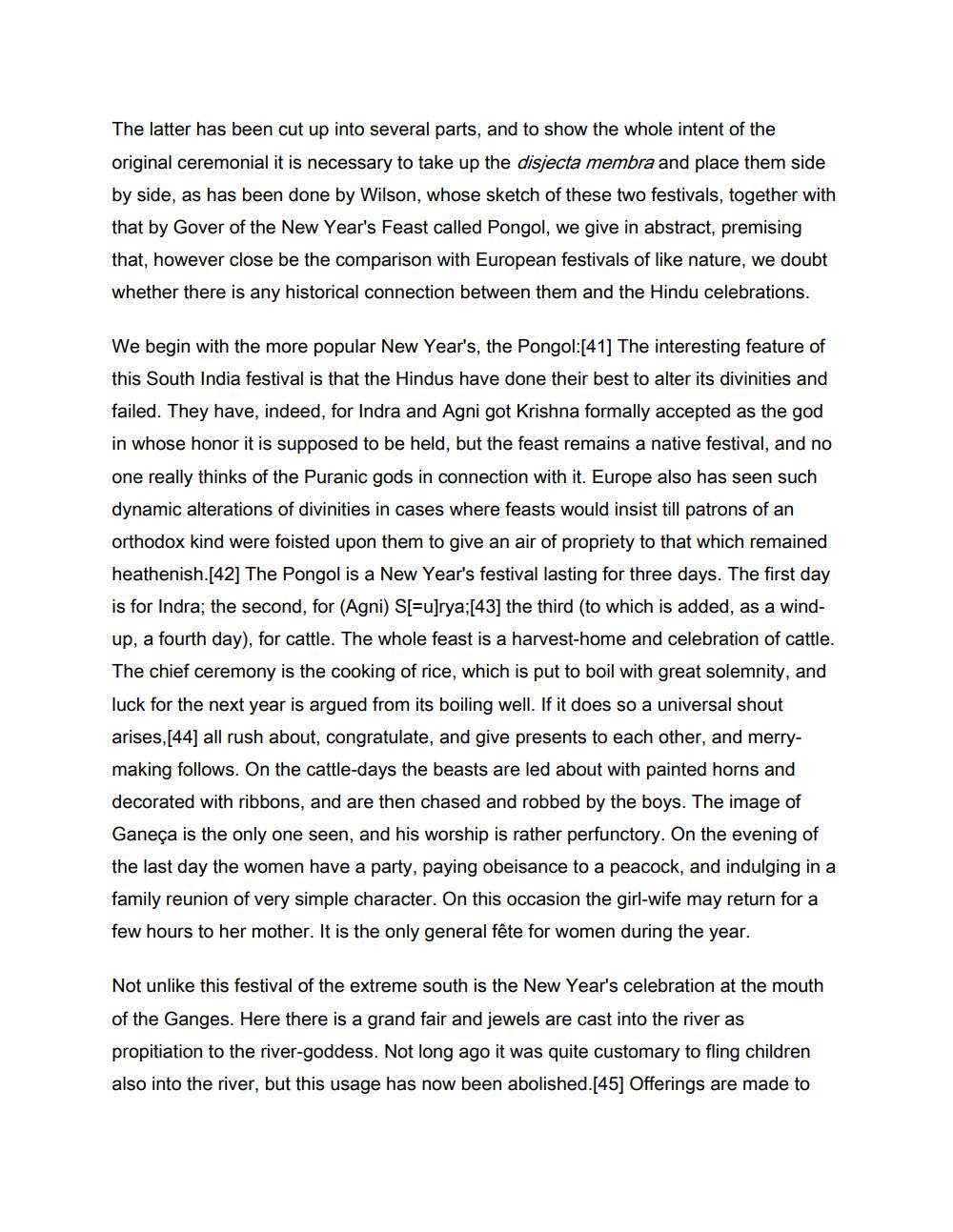________________
The latter has been cut up into several parts, and to show the whole intent of the original ceremonial it is necessary to take up the disjecta membra and place them side by side, as has been done by Wilson, whose sketch of these two festivals, together with that by Gover of the New Year's Feast called Pongol, we give in abstract, premising that, however close be the comparison with European festivals of like nature, we doubt whether there is any historical connection between them and the Hindu celebrations.
We begin with the more popular New Year's, the Pongol:[41] The interesting feature of this South India festival is that the Hindus have done their best to alter its divinities and failed. They have, indeed, for Indra and Agni got Krishna formally accepted as the god in whose honor it is supposed to be held, but the feast remains a native festival, and no one really thinks of the Puranic gods in connection with it. Europe also has seen such dynamic alterations of divinities in cases where feasts would insist till patrons of an orthodox kind were foisted upon them to give an air of propriety to that which remained heathenish.[42] The Pongol is a New Year's festival lasting for three days. The first day is for Indra; the second, for (Agni) S[=u]rya;[43] the third (to which is added, as a windup, a fourth day), for cattle. The whole feast is a harvest-home and celebration of cattle. The chief ceremony is the cooking of rice, which is put to boil with great solemnity, and luck for the next year is argued from its boiling well. If it does so a universal shout arises, [44] all rush about, congratulate, and give presents to each other, and merrymaking follows. On the cattle-days the beasts are led about with painted horns and decorated with ribbons, and are then chased and robbed by the boys. The image of Ganeça is the only one seen, and his worship is rather perfunctory. On the evening of the last day the women have a party, paying obeisance to a peacock, and indulging in a family reunion of very simple character. On this occasion the girl-wife may return for a few hours to her mother. It is the only general fête for women during the year.
Not unlike this festival of the extreme south is the New Year's celebration at the mouth of the Ganges. Here there is a grand fair and jewels are cast into the river as propitiation to the river-goddess. Not long ago it was quite customary to fling children also into the river, but this usage has now been abolished.[45] Offerings are made to




